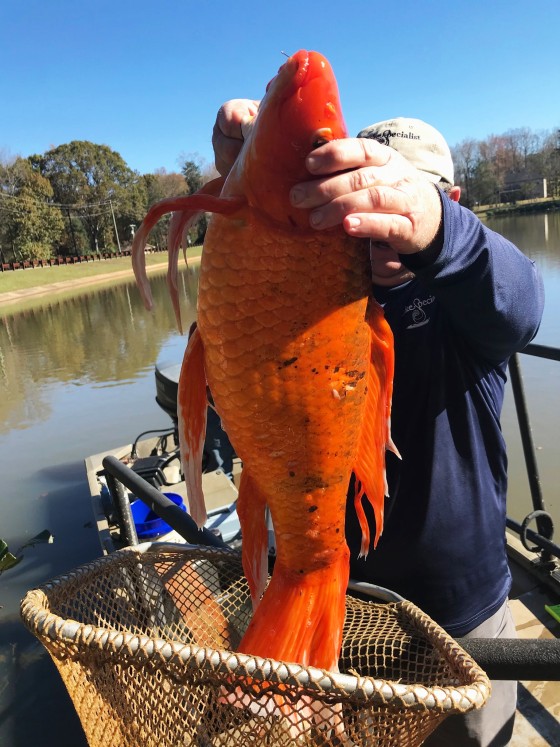Bayard
Bayard's JournalURGENT: This animal could be euthanized if not adopted soon.
From the RescueMe's Great Pyrenees postings.

Details:
"I shared this post from Facebook. I am in NC and post originated in Jasper TN. I can be reached at Tammy L. Morgan on FB
CONTACT
Tennessee
304-890-0390
Gawd, I hate people that dump animals!! The animals don't understand what has happened to them, or why. And they are good hearted enough to wonder if the owner is going to come back for them. If I didn't already have 3 Pyr's, I'd go get him.
![]()
Can anyone help? Even if its just to foster him for awhile?
URGENT: This animal could be euthanized if not adopted soon.
From the RescueMe's Great Pyrenees postings.

Details:
"I shared this post from Facebook. I am in NC and post originated in Jasper TN. I can be reached at Tammy L. Morgan on FB
CONTACT
Tennessee
304-890-0390
Gawd, I hate people that dump animals!! The animals don't understand what has happened to them, or why. And they are good hearted enough to wonder if the owner is going to come back for them. If I didn't already have 3 Pyr's, I'd go get him.
![]()
Can anyone help? Even if its just to foster him for awhile?
Human-made materials now equal weight of all life on Earth
The amount of concrete, asphalt, metal, and plastic on Earth is growing fast. This year may mark the point when artificial stuff outweighs living things.
ENVIRONMENTALISTS OFTEN SAY that humanity needs to shrink its planetary footprint. Now, a new study has demonstrated how literally massive that footprint is.
While the mass of Earth’s life forms stands at about 1.1 trillion metric tons (1.2 trillion U.S. tons) and has not changed much in recent years, the so-called “anthropogenic mass” of artificial materials is growing exponentially. The mass of everything people have built and made, from concrete pavements and glass-and-metal skyscrapers to plastic bottles, clothes, and computers, is now roughly equal to the mass of living things on Earth and could surpass that this year, according to research published today in Nature.
The finding may bolster the argument that Earth has entered the Anthropocene, a proposed geologic epoch in which humans are the dominant force shaping the planet. As senior study author Ron Milo of the Weizmann Institute of Science in Rehovot, Israel puts it, the world is undergoing a material transition that “happens not just once in a lifetime, but once in an era.”
While that insight is more symbolic than scientifically meaningful, the material scale of the human enterprise helps explain how we’ve managed to transform global nutrient cycles, alter the climate, and drive myriad species to the brink of extinction.
This isn’t the first attempt to weigh humanity’s impact on the planet. In 2016, a team of scientists estimated the weight of the “technosphere”—including not just wholly artificial buildings and products, but also the approximate weight of the land and seafloor that we’ve excavated, modified or trawled to build cities, plant crops, raise livestock, and catch fish. They came up with a figure of 30 trillion tons. Other recent studies have tracked changes just in the biological world, such as the amount of carbon stored in plants or the number of chickens on the planet.
But to the authors’ knowledge, there hasn't been a comprehensive analysis looking at changes in the weight of the artificial and biological worlds simultaneously but separately. That has made it difficult for scientists to draw an apples to apples—or apples to iPhones—comparison.
https://www.nationalgeographic.com/environment/2020/12/human-made-materials-now-equal-weight-of-all-life-on-earth/?cmpid=org=ngp::mc=crm-email::src=ngp::cmp=editorial::add=Animals_20201210&rid=2D7EBD8232363870D75E126868635ACF
31 species declared Extinct - IUCN Red List
There are now 128,918 species on the IUCN Red List, of which 35,765 are threatened with extinction.
(snip)
All of the world’s freshwater dolphins now threatened
With the tucuxi (Sotalia fluviatilis) moving from Data Deficient to Endangered, all of the world’s freshwater dolphin species are now listed as threatened on the IUCN Red List. This small grey dolphin species found in the Amazon river system has been severely depleted by incidental mortality in fishing gear, damming of rivers and pollution. Eliminating the use of gillnets – curtains of fishing net that hang in the water – and reducing the number of dams in tucuxi habitat are priorities to enable numbers to recover. Enforcing the ban on the deliberate killing of tucuxis is also essential.

(snip)
The IUCN Red List
Global figures for the 2020-3 IUCN Red List of Threatened Species:
TOTAL SPECIES ASSESSED = 128,918
(Total threatened species = 35,765)
Extinct = 902
Extinct in the Wild = 80
Critically Endangered = 7,762
Endangered = 13,285
Vulnerable = 14,718
Near Threatened = 7,644
Lower Risk/conservation dependent = 180 (this is an old category that is gradually being phased out of The IUCN Red List)
Least Concern = 66,469
Data Deficient = 17,878
The figures presented above are only for those species that have been assessed for The IUCN Red List to date. Although not all of the world’s species have been assessed, The IUCN Red List provides a useful snapshot of what is happening to species today and highlights the urgent need for conservation action. Relative percentages for threatened species cannot be provided for many taxonomic groups on The IUCN Red List because they have not been comprehensively assessed. For many of these groups, assessment efforts have focused on threatened species; therefore, the percentage of threatened species for these groups would be heavily biased.

Long, but worthwhile article:
https://www.iucn.org/news/species/202012/european-bison-recovering-31-species-declared-extinct-iucn-red-list
10 Good-news Stories for Wildlife in 2020
No one would deny that 2020 has been exceptionally tough. The coronavirus has killed more than a million people worldwide, indelibly changing families and communities. In many ways, animals haven’t fared well, either: The Chinese government promoted bear bile as a coronavirus treatment, poaching surged as COVID-19 lockdowns brought ecotourism to a standstill, and captive wildlife—including tigers at the Bronx Zoo and mink in Denmark fur farms—tested positive for the virus. (To help protect humans from a variant of the coronavirus found in mink, the Danish government ordered the country’s more than 15 million mink living on fur farms to be killed. They weren’t buried deeply enough, however, and as the bodies decomposed, “zombie” mink started breaking out at the surface.)
But 2020 hasn’t all been bad. Here are 10 ways wildlife benefited:
1. Wildlife have benefited from some of our pandemic-induced lifestyle changes.
2. Owners of problematic private zoos in the U.S. faced legal repercussions
3. Black conservationists celebrated their love of wildlife during the first-ever Black Birders Week.
4. Pangolins, the world’s most trafficked non-human mammal, got two key protections in China
5. Suspected members of an alleged flying squirrel smuggling ring were apprehended.
6. A new effort was launched to combat an invasive species.
7. Retired circus elephants will begin a new chapter.
8. Tasmanian devils returned to mainland Australia for the first time in millennia.
9. Rare global cooperation led to a crackdown on wildlife smuggling.
10. Gray wolves will be reintroduced in Colorado.
Details and photos under each title at website:
https://www.nationalgeographic.com/animals/2020/12/wildlife-wins-good-news-stories-2020/?cmpid=org=ngp::mc=crm-email::src=ngp::cmp=editorial::add=Animals_20201210&rid=2D7EBD8232363870D75E126868635ACF
'Massive' goldfish weighing 9 pounds found in South Carolina lake
The giant goldfish was found in a park in Greenville County, South Carolina as wildlife authorities conducted a fish population survey, a park official said.

A goldfish weighing nine pounds came under the spotlight Monday after being discovered during a fish population survey at a lake in South Carolina, park officials said. Ty Houck, an official with Greenville County Parks, said the “massive” fish was found swimming on Nov. 16 in a 12-acre body of water in Oak Grove Lake Park in the county of Greenville.
Greenville Rec, which oversees the park where the fish was discovered, posted a photo of the golden spectacle on Facebook on Monday.
“Anyone missing their goldfish? This 9lb goldfish was found in Oak Grove Lake during some recent testing at our lakes,” the organization wrote in a post. “The work included electrofishing, a method of measuring the health of the fish population.”
Wildlife officials were conducting a fish population survey analogous to a “fish sticking its finger, or fin, in a socket,” Houck said. “A weak electrical current is run through the water and stuns them for a few minutes.”
Houck said he believes the giant goldfish is the only one swimming in the lake because park officials did not encounter any others in their survey. He added that while the goldfish is non-native to South Carolina, it was not considered an invasive species to the lake.
The average lifespan of goldfish is between six to seven years, while those found in the wild can live up to 30 years, according to the United States Geological Survey. According to the agency, goldfish can grow upwards of six pounds — far below the weight of the nine pound pond fish found in South Carolina.
As for the goldfish's current whereabouts, Houck said he placed the fish back in the water after snapping a photo of the large creature. “At the advice of professionals we decided to leave the bachelor, or bachelorette, back where we found it,” Houck said. “Obviously, they’re really happy here.”
No more at link.
https://www.nbcnews.com/news/us-news/massive-goldfish-weighing-9-pounds-found-south-carolina-lake-n1250396
Profile Information
Gender: Do not displayHome country: U.S.
Member since: Tue Dec 29, 2015, 03:16 PM
Number of posts: 22,062